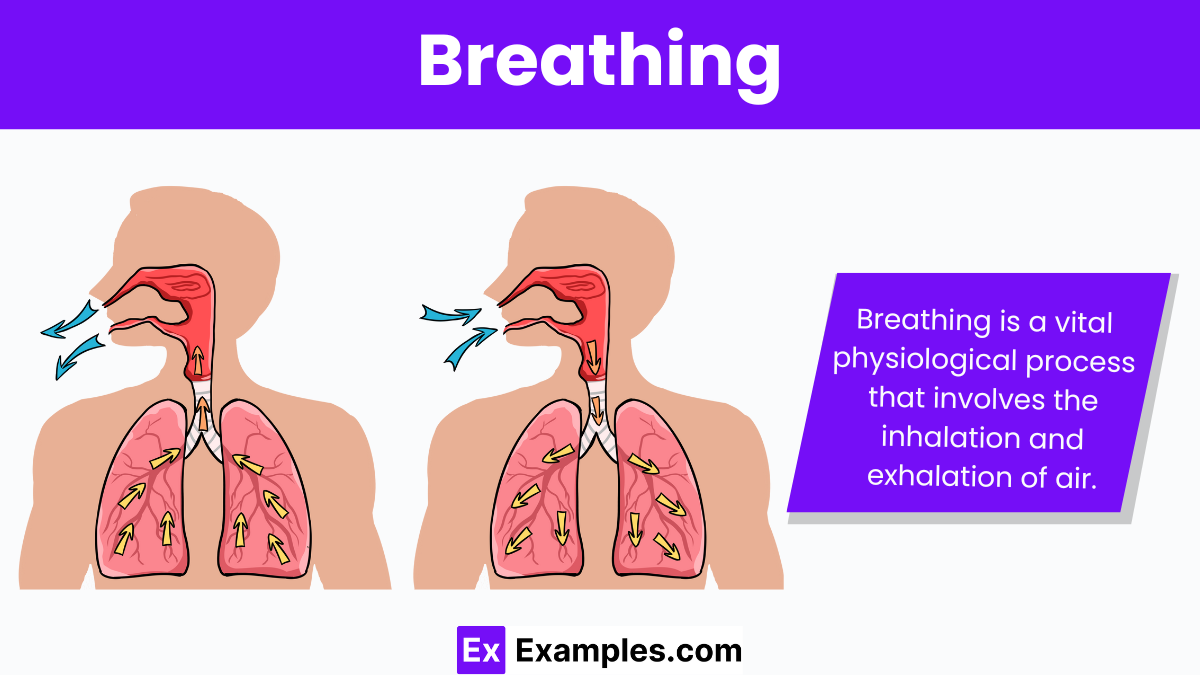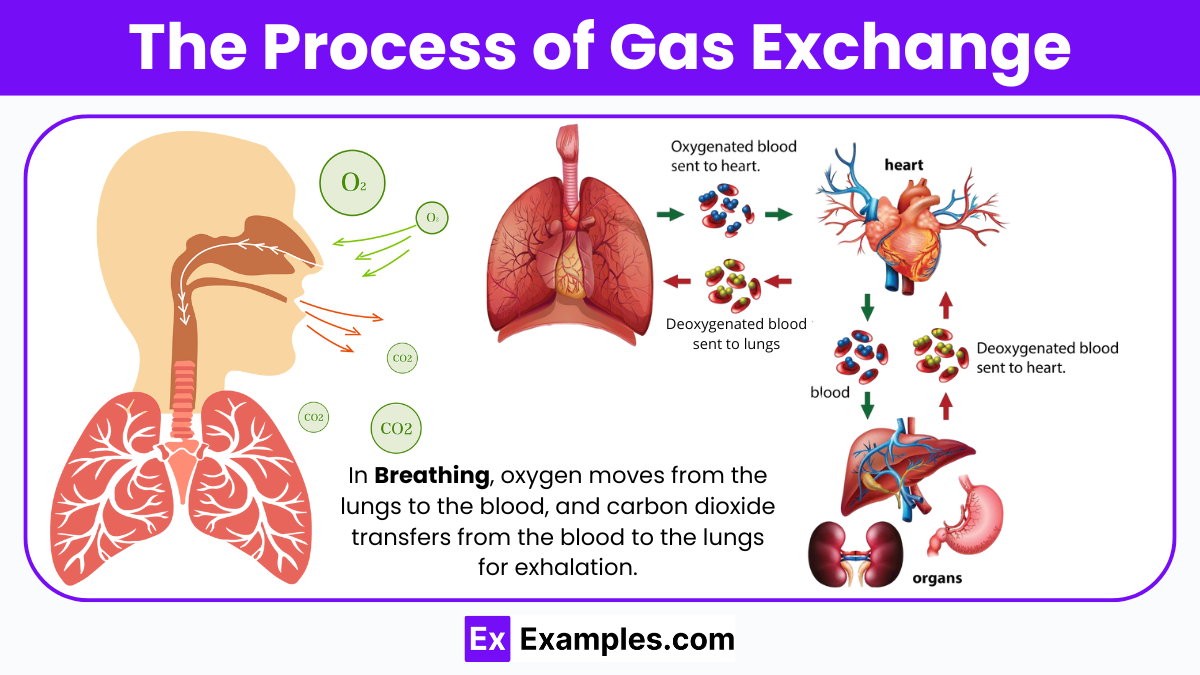What is the process of moving air in and out of the lungs called?
Digestion
Circulation
Respiration
Ventilation

Breathing stands as the fundamental process through which living organisms harness oxygen from the air to sustain life. This vital function not only fuels cellular activities but also plays a critical role in the regulation of our body’s pH balance and temperature. Every inhalation brings life-giving oxygen into our lungs, while each exhalation expels carbon dioxide, a metabolic waste.
Breathing is the physiological process that moves air in and out of the lungs to facilitate gas exchange with the internal environment, primarily to bring in oxygen and flush out carbon dioxide. This essential life process occurs largely involuntarily, though it can be controlled consciously to some extent.
The act of breathing involves two main phases: inhalation (or inspiration) and exhalation (or expiration).
The mechanics of breathing, also known as pulmonary ventilation, involve a complex system of anatomical structures working together to ensure air is efficiently drawn into the lungs and expelled out. This process is critical for gas exchange, a key component of respiratory physiology.
The main structures involved in the mechanics of breathing include:
Breathing consists of two phases: inhalation (inspiration) and exhalation (expiration).
Breathing involves a complex system of upper and lower respiratory tracts that work together to ensure that air is inhaled and exhaled efficiently, facilitating the exchange of oxygen and carbon dioxide.
The journey of air begins in the upper respiratory tract, which includes the nose, nasal cavity, sinuses, and pharynx. Air enters through the nostrils where it is warmed, moistened, and filtered by the nasal mucosa and hairs. This initial step helps to protect the more delicate structures further along the respiratory system. As air moves through the nasal cavity, it passes into the pharynx, a muscular tube that serves as a pathway for both air and food.
From the pharynx, air proceeds to the lower respiratory tract, beginning with the larynx, which houses the vocal cords. The larynx functions as a critical checkpoint that prevents food and drink from entering the trachea during swallowing. Following the larynx, air moves down the trachea, a rigid tube that bifurcates into two primary bronchi, each entering a lung. Inside the lungs, these bronchi subdivide into smaller bronchioles that distribute air throughout the lung’s lobes. The bronchioles eventually lead to the alveoli, tiny sacs where oxygen and carbon dioxide exchange occurs with the blood.
Breathing patterns vary depending on physical demands, emotional states, and health conditions. Different types of breathing serve various physiological purposes and can significantly impact overall well-being. Here are some of the primary types of breathing:
Diaphragmatic breathing involves deep breathing using the diaphragm rather than the upper chest. This type of breathing is efficient and helps reduce the energy required to breathe, as it enhances oxygen exchange and engages the lower parts of the lungs.
Costal breathing involves the rib cage and is characterized by the expansion of the chest. It is less efficient than diaphragmatic breathing but can be seen during strenuous activities or in situations of stress.
Clavicular breathing is the most shallow form of breathing where minimal air is taken into the lungs, primarily involving the upper chest and neck muscles. This type of breathing is usually a sign of respiratory distress and is not efficient for healthy gas exchange.
Originating from yoga, pranayama is a controlled breathing practice where the breath is intentionally altered to produce specific results. It involves various techniques, each with different effects on the mind and body.
This technique involves inhaling through the nose and exhaling through pursed lips, as if blowing through a straw. This type of breathing is often used by people with pulmonary diseases, such as chronic obstructive pulmonary disease (COPD).
Developed by Ukrainian doctor Konstantin Buteyko, this method focuses on reducing the breathing rate and volume to increase blood CO2 levels, which can dilate the blood vessels and improve oxygen delivery to tissues.
Gas exchange primarily occurs in the lungs, specifically in the tiny air sacs called alveoli. The alveoli are surrounded by a network of capillaries. The walls of the alveoli and capillaries are very thin, allowing gases to move across them easily through a process called diffusion.

The process of gas exchange is also influenced by the pH level of the blood. Carbon dioxide can react with water in the blood to form carbonic acid, which lowers the pH. The body monitors these changes closely and adjusts breathing rates to maintain a stable pH, thus ensuring efficient gas exchange.
At high altitudes, the ambient air pressure is lower than at sea level. This decrease in air pressure leads to a reduction in the partial pressure of oxygen, which has several effects:
In contrast, at low altitudes or below sea level, the ambient air pressure is higher, increasing the partial pressure of oxygen. This scenario typically does not pose challenges for breathing except in hyperbaric conditions, such as those artificially created for therapeutic purposes.
Also known as belly breathing, this exercise focuses on strengthening the diaphragm, allowing it to do most of the work during breathing, which can increase lung capacity.
This exercise helps slow down the pace of breathing, making each breath more effective.
This exercise works on expanding the ribs, which helps the lungs take in more air.
This exercise not only improves focus but also increases lung capacity by holding breaths for different counts.
Breathing exercises can help strengthen the lungs and improve their capacity. By regularly practicing deep breathing, you can increase the amount of air your lungs can hold and improve the efficiency of your respiratory system. This is particularly beneficial for athletes and those recovering from respiratory illnesses.
Deep, controlled breathing increases the amount of oxygen that reaches your bloodstream. Better oxygen exchange helps nourish your cells and tissues, leading to improved overall health and vitality.
Breathing exercises are a proven method to reduce stress and anxiety. Techniques such as diaphragmatic breathing, where you breathe deeply from the belly, can help trigger a relaxation response in the body, calming the mind and reducing stress hormones.
Regular breathing exercises can help lower blood pressure by promoting relaxation and reducing stress. This reduction in blood pressure can decrease the risk of cardiovascular diseases and improve heart health.
Practicing focused breathing exercises can enhance concentration and mental clarity. By centering your attention on your breath, you can clear your mind of distractions and improve your ability to concentrate on tasks.
Breathing exercises can be particularly effective in improving sleep patterns. Techniques that emphasize slow and deep breaths can help calm the mind and prepare the body for sleep, making it easier to fall asleep and improve the quality of sleep.
Breathing exercises can also play a role in pain management. By focusing on your breath and practicing relaxation techniques, you can reduce the perception of pain. This is particularly helpful for chronic pain conditions or after surgeries.
By improving the efficiency of your breathing and increasing oxygen flow to your body, breathing exercises can lead to higher energy levels throughout the day. This can enhance your productivity and overall quality of life.
Yes, daily breathing exercises improve lung capacity, reduce stress, and enhance overall respiratory and cardiovascular health.
Diaphragmatic breathing is highly effective for improving oxygenation and relaxing the mind and body.
Deep breathing increases oxygen flow to the brain, enhances clarity and focus, and reduces anxiety and stress levels.
The 2-minute breathing exercise quickly reduces stress, boosts energy, and improves focus, making it ideal for busy schedules.
Aiming for at least 5 to 10 minutes of breathing exercises daily can significantly benefit mental and physical health.
Text prompt
Add Tone
10 Examples of Public speaking
20 Examples of Gas lighting
What is the process of moving air in and out of the lungs called?
Digestion
Circulation
Respiration
Ventilation
Which part of the brain controls breathing?
Cerebellum
Medulla oblongata
Cerebrum
Hypothalamus
The small hair-like structures that filter air in the nasal passage are called:
Alveoli
Cilia
Villi
Bronchi
What happens to the intercostal muscles during inhalation?
They contract
They relax
They stay the same
They atrophy
What is the function of surfactant in the lungs?
Increase surface tension
Decrease surface tension
Promote gas exchange
Reduce airflow
Which of the following conditions is characterized by difficulty breathing and shortness of breath?
Asthma
Hepatitis
Arthritis
Diabetes
The process of gas exchange between the blood and the body cells is called:
External respiration
Cellular respiration
Internal respiration
Ventilation
How does carbon dioxide primarily travel in the blood?
Dissolved in plasma
Bound to hemoglobin
As bicarbonate ions
As carbonic acid
What type of cells line the respiratory tract to help protect it from pathogens?
Red blood cells
Epithelial cells
Neurons
Muscle cells
What is the main purpose of the respiratory system?
To digest food
To circulate blood
To exchange gases
To produce hormones
Before you leave, take our quick quiz to enhance your learning!

